Vulnerability is the weakness that allows the attacker to enter and harm, it may be a flaw in design or misconfiguration.
To exploit the vulnerability attacker should have an applicable tool or technique that connects to the system’s weakness.
This article highlights the critical significance of vulnerability database sources in tracing emerging vulnerabilities within software, hardware, and systems.
We will investigate the role of these datasets in the larger cybersecurity ecosystem, where they come from, and what effect they have.
Anyone responsible for protecting digital assets and preserving the security of information systems has to be familiar with vulnerability databases and how they operate as the digital sphere continues to grow.
Table of Contents
FAQ
National Vulnerability Database
Common Vulnerabilities And Exposures
VulnDB – Vulnerability Intelligence
DISA IAVA Database And STIGS
Open Vulnerability And Assessment Language
National Council of ISACs
Mend Vulnerability Database
Conclusion
FAQ
1.What are the common database vulnerabilities?
SQL injection (SQLi), where attackers manipulate input to execute unauthorized SQL commands; Cross-Site Scripting (XSS), allows malicious scripts to run in users’ browsers.
Cross-Site Request Forgery (CSRF), tricking authenticated users into unwanted actions; weak authentication and authorization, allowing unauthorized access; weak, easily guessed passwords; and inadequate patch management, leaving systems vulnerable to known exp Security assessments, patching, and encryption are needed to protect data integrity and confidentiality from these vulnerabilities.
2. In what database are software vulnerabilities tracked?
Software vulnerabilities are tracked in “vulnerability databases” or “CVE databases.” The MITRE Corporation’s Common Vulnerabilities and Exposures (CVE) database, maintained alongside many organizations and security experts, is one of the most popular vulnerability databases.
Each software vulnerability has a CVE ID, making it easier for the security community to reference and share information. Other databases, such as the US National Vulnerability Database (NVD) run by the National Institute of Standards and Technology (NIST), catalog and provide specific information regarding software flaws.
These databases help security professionals, software developers, and businesses remain abreast of new vulnerabilities and install updates to safeguard their systems and applications.
3. Who maintains the CVE database?
The MITRE Corporation works with other groups and security experts to update the Common Vulnerabilities and Exposures (CVE) database.
The Common Vulnerability and Exposures (CVE) database is managed and curated in large part by MITRE, a nonprofit that runs federally financed research and development centers (FFRDCs).
The Common Vulnerability and Exposures (CVE) database is an authoritative source for tracking and referencing known software vulnerabilities by assigning them unique identifiers (CVE IDs).
CVE can maintain its status as a comprehensive and up-to-date library of vulnerabilities thanks to the efforts of many different parties working together to make it easier for security experts and businesses to share and access vital information regarding security risks.
7 Best Vulnerability Database Sources List:
1. National Vulnerability Database

NVD is the U.S. government repository of standards-based vulnerability management data represented using the Security Content Automation Protocol (SCAP).
This data enables the automation of vulnerability management, security measurement, and compliance. NVD includes databases of security checklists, security-related software flaws, misconfigurations, product names, and impact metrics.
The severity, impact, and fixability of vulnerabilities are all described in great depth in this helpful guide.
Experts in the field of cybersecurity will be better able to manage risks, prioritize patches, and develop an effective cybersecurity plan if they have access to the NVD.
Resource status:
79680 CVE Vulnerabilities 376 Checklists 249 US-CERT Alerts 4458 US-CERT Vuln Notes 10286 OVAL Queries 115232 CPE Names
2. Common Vulnerabilities And Exposures
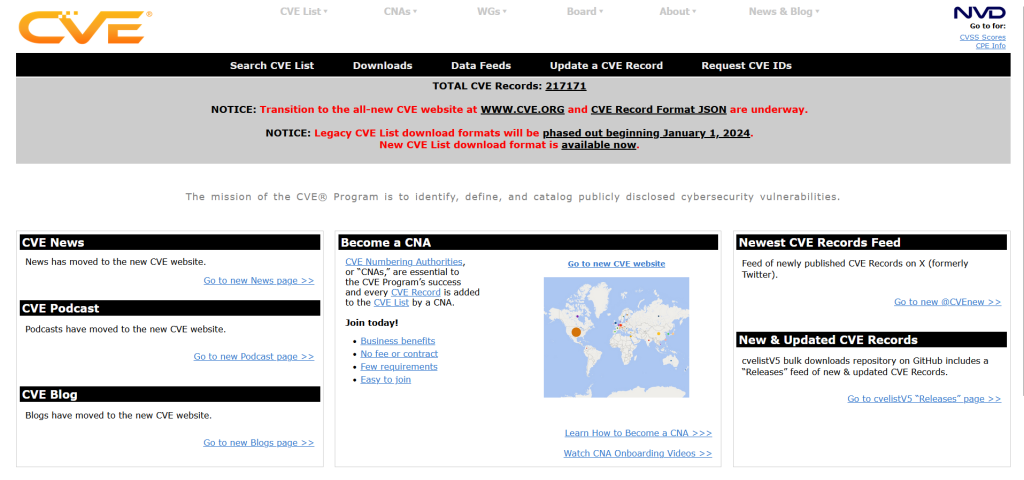
International in scope and free for public use, CVE is a dictionary of publicly known information security vulnerabilities and exposures. CVE’s common identifiers enable data exchange between security products and provide a baseline index point for evaluating the coverage of tools and services.
- Scanning tools most commonly use CVEs for classification.
- SIEM tools would have the CVE’s understanding while reporting.
We can download the CVE master copy from the CVE website. Also, find the list of CVE Coverage goals. As a most updated feature Common Vulnerability Scoring calculator has been introduced.
The CERT Knowledgebase is a collection of internet security information related to incidents and vulnerabilities.
The CERT Knowledgebase houses the public Vulnerability Notes Database as well as two restricted-access components. Vulnerability notes include summaries, technical details, remediation information, and lists of affected vendors.
3. VulnDB – Vulnerability Intelligence
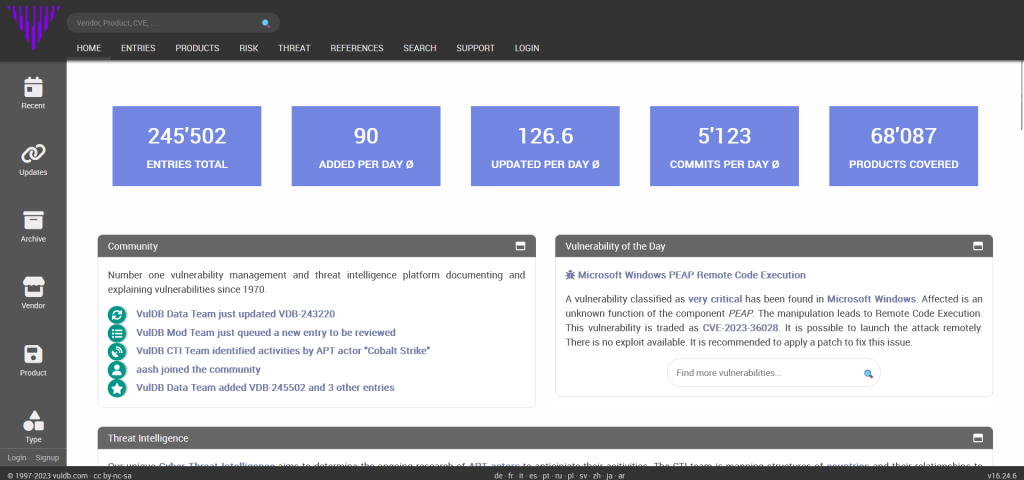
Risk-Based Security offers the VulnDB, for comprehensive vulnerability intelligence through a continuously updated data feed.
Based on the largest and most comprehensive vulnerability database, our VulnDB allows organizations to poll for the latest in software security vulnerability information.
The VulnDB data feed subscription offering provides organizations with timely, accurate, and thorough vulnerability information.
- 3rd Party Libraries – Over 2,000 software libraries identified and tracked for issues
- RESTful API – Ability to integrate data easily with custom CSV export and usage of flexible RESTful AP
- Email Alerting – Ability to configure email alerts for multiple email addresses by Vendor, Product, Version, and Search criteria
- Research Team – Our team performs further in-depth analysis of select vulnerabilities to provide customers with the most detailed information available on cause and impact.
- CVE Mapping – ~ 100% mapping to CVE/NVD
- Timely Alerts – 24×365 Monitoring and Alerting
- Risk Scores – Extended classification system, our CVSSv2 metrics, and VTEM (Vulnerability Timeline and Exposure Metrics).
- Technical Analysis – Detailed analysis provided for vulnerabilities
- Detailed Information – Over 70 data fields including vulnerability source information, extensive references, and links to solutions
- Impact Analysis
- Mitigation Guidance
- Links to Security Patches
- Links to Exploits
- Vendor and Product Evaluations
4. DISA IAVA Database And STIGS
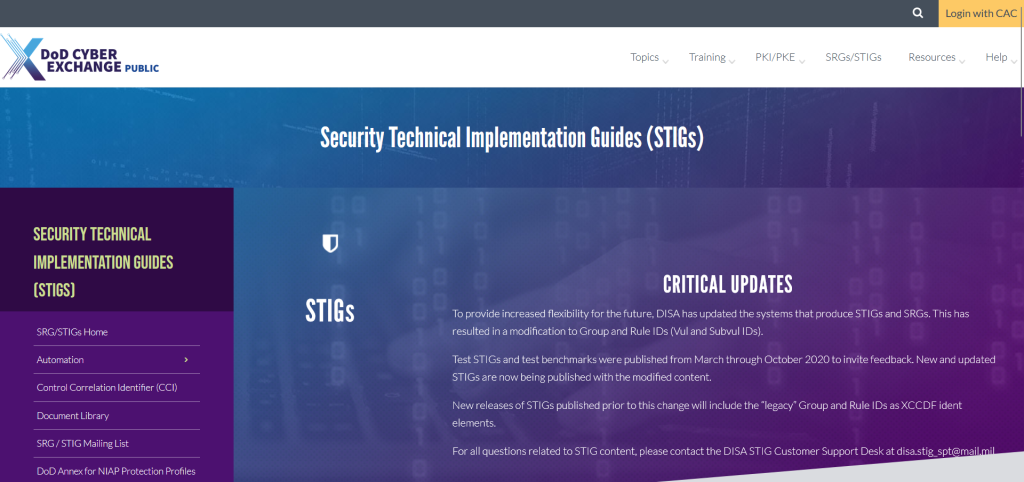
CVE IDs are mapped to the US Defense Information System Agency’s (DISA) Information Assurance Vulnerability Alerts (IAVAs), downloads of which are posted on DISA’s public Security Technical Implementation Guides (STIG) website.
“IAVA, the DISA-based vulnerability mapping database, is based on existing SCAP sources, and once in a while it contains details for government systems that are not a part of the commercial world,” says Morey Haber, VP of technology at BeyondTrust.
“For any vendor doing .gov or .mil work, this reference is necessary.”
5. Open Vulnerability And Assessment Language
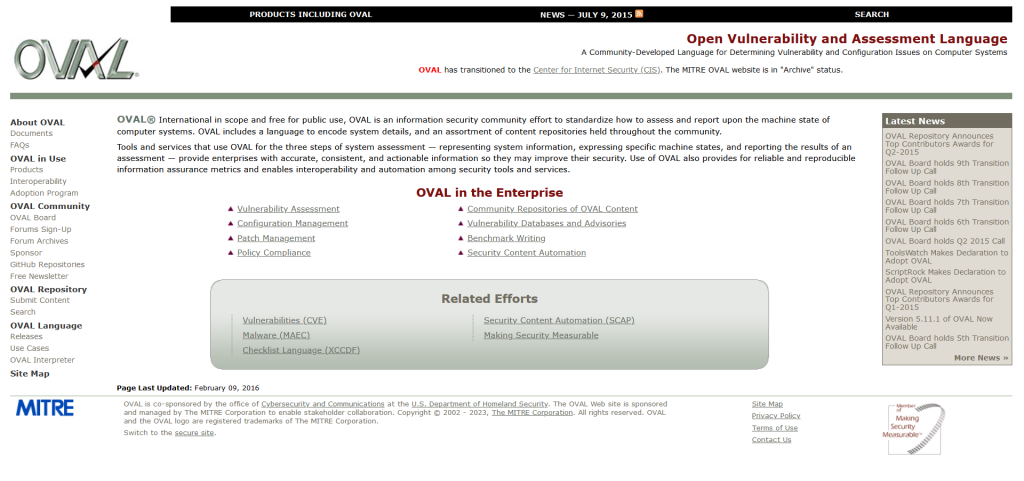
VAL® International in scope and free for public use, OVAL is an information security community effort to standardize how to assess and report on the machine state of computer systems.
OVAL includes a language to encode system details and an assortment of content repositories held throughout the community.
Tools and services that use OVAL for the three steps of system assessment — representing system information, expressing specific machine states, and reporting the results of an assessment — provide enterprises with accurate, consistent, and actionable information so they may improve their security.
OVAL use also provides reliable and reproducible information assurance metrics and enables interoperability and automation among security tools and services.
6. National Council of ISACs
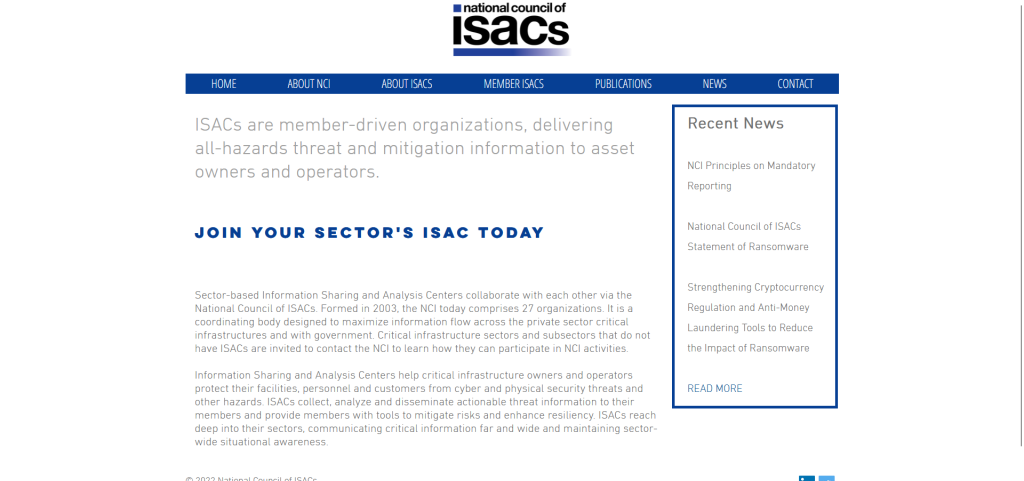
Sector-specific Information Sharing and Analysis Centers (ISACs) are non-profit, member-driven organizations formed by critical infrastructure owners and operators to share information between government and industry.
The primary goal of ISACs is to quickly disseminate physical and cyber threat alerts and other critical information to the member organizations.
If your business operates within a critical infrastructure sector, consider becoming a member of an ISAC.
Below you’ll find a small portion of the ISACs associated with the national council of ISACs. There are many more on the National Council of ISACs website.
MS-ISAC (multi-state): The MS-ISAC is the focal point for cyber threat prevention, protection, response, and recovery for the nation’s state, local, tribal, and territorial (SLTT) governments.
FS-ISAC (financial services): FS-ISAC is the global financial industry’s go-to resource for cyber and physical threat intelligence analysis and sharing.
A-ISAC (aviation): The aviation ISAC provides an aviation-focused information sharing and analysis function to help protect global aviation businesses, operations, and services.
AUTO-ISAC (automotive): The automotive ISAC is a non-profit information-sharing organization that is owned and operated by automotive manufacturers and suppliers — 98% of vehicles on the road in the United States are represented by member companies in the AUTO-ISAC.
ONG-ISAC (oil and gas): The oil and natural gas ISAC was created to provide shared intelligence on cyber incidents, threats, vulnerabilities, and associated responses present throughout the oil and gas industry.
NH-ISAC (National Healthcare): The official healthcare information sharing and analysis center offers non-profit and for-profit healthcare stakeholders a community and forum for sharing cyber and physical threat indicators, best practices, and mitigation strategies.
IT-ISAC (information technology): Members participate in national and homeland security efforts to strengthen the IT infrastructure through cyber information sharing and analysis.
There also are a growing number of Information Sharing and Analysis Organizations, or ISAOs, specific to various industries, groups, and regions.
ISAOs stem from a 2015 Executive Order calling for the formation of more intel-sharing groups among specific communities.
7. Mend Vulnerability Database
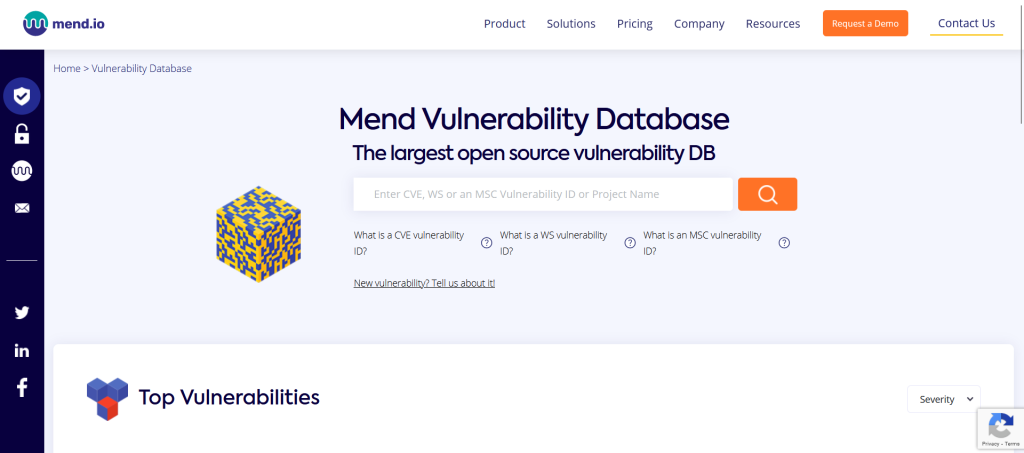
The Mend.io open-source vulnerabilities database examines more than three million open-source components in addition to more than two hundred programming languages.
Multiple times each day, it compiles data that comes from a wide number of sources, such as the National Vulnerability Database (NVD), security advisories, and the issue trackers of open-source projects.
Find and fix open source security vulnerabilities with access to all the data you need to address open source vulnerabilities, including Programming language, CWE type, CVSS Severity scores, including CVSS v2.0 and v3.x, exposure level (how many organizations have been impacted), Verified suggested fixes, Additional information to help make informed remediation decisions.
Conclusion
On the other hand, it is essential to keep in mind that vulnerability databases might not cover every vulnerability, and there might be a lag time between reporting and updating information.
Because of this, it is strongly recommended that businesses adopt a multi-faceted approach to vulnerability management.
This strategy should incorporate continuous monitoring, threat intelligence, and proactive security procedures to reduce threats that go beyond what is captured in these databases.
In conclusion, vulnerability databases are valuable sources for tracking down new vulnerabilities; nevertheless, they should be incorporated into a larger cybersecurity strategy that also includes proactive monitoring, threat assessment, and response procedures to safeguard systems and data from developing threats effectively.



.png
)
